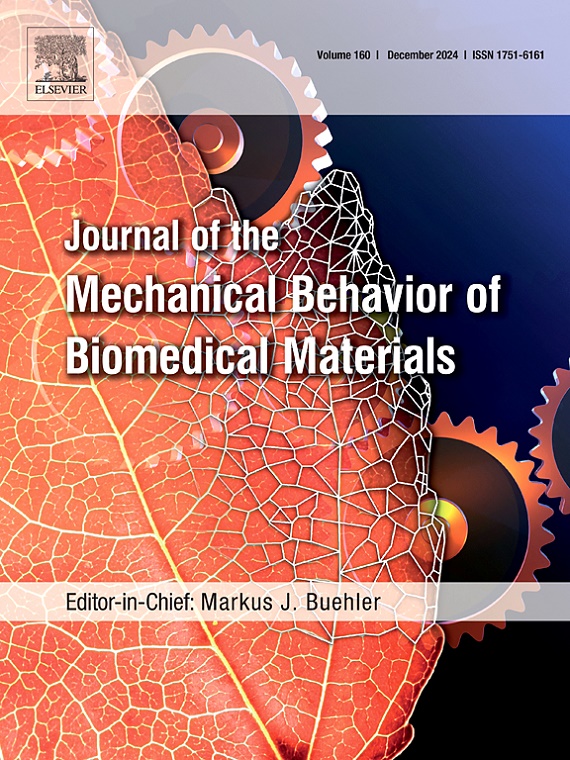Effect of different finishing/polishing techniques and glaze application on the flexural strength of ultratranslucent zirconia after hydrothermal aging
IF 3.3
2区 医学
Q2 ENGINEERING, BIOMEDICAL
Journal of the Mechanical Behavior of Biomedical Materials
Pub Date : 2025-02-03
DOI:10.1016/j.jmbbm.2025.106924
引用次数: 0
Abstract
Purpose
To evaluate the effect of different finishing/polishing procedures and glaze on the surface roughness, flexure strength, and microstructure of an ultratranslucent zirconia (UZ) submitted aging.
Methodology
Two hundred and forty (240) UZ bars were sintered (8 × 2 × 1 mm) and treated according to the factors (n = 15): Type of finishing/polishing procedure (Control - Ctrl; Ultra-fine Diamond Burr - FG; Medium grit diamond burr- MG; Stone Bur - Stone; Rubber - Rub; FG + Rub; MG + Rub; Stone + Rub), and “Glaze” (Without and With - Gl). The bars were hydrothermally degraded (24 h, 127 °C, 1.7 bar), submitted to roughness analysis and 3-point mini flexural strength (FS) test. Scanning Electron Microscopy (SEM), X-ray Diffraction (XDR), and Weibull analysis were performed. Data were analyzed by 2-way ANOVA and Tukey test (5%).
Results
Finishing/Polishing’ and its interaction with ‘Glaze’ were statistically significant (P < 0.0001) for FS, unlike ‘Glaze’ alone (P = 0.8827). Rub (602.11 MPaA), Stone + Rub (555.50 MPaAB), and Ctrl (621.72 MPaA) showed superior FS, while FG_GL showed the lowest FS. Stone + Rub showed the highest Weibull modulus (13.15a). Ctrl_Gl (0.18 ± 0.02F μm) and Ctrl + Rub_Gl (0.29 ± 0.07F μm) showed the lowest roughness. Glaze (0.48B) reduced the roughness of the groups that did not receive it (1.56A), with MG (2.60 ± 0.69A μm) and FG (2.50 ± 0.7A μm) exhibiting rougher surfaces.
Conclusions
Rubber polishers are ideal for minor adjustments to UZ while Stone followed by rubber is effective for greater abrasion without compromising mechanical strength. The application of glaze did not reduce mechanical strength and resulted in lower surface roughness compared to the non-glazed groups, with the exception of the FG groups.

求助全文
约1分钟内获得全文
求助全文
来源期刊

Journal of the Mechanical Behavior of Biomedical Materials
工程技术-材料科学:生物材料
CiteScore
7.20
自引率
7.70%
发文量
505
审稿时长
46 days
期刊介绍:
The Journal of the Mechanical Behavior of Biomedical Materials is concerned with the mechanical deformation, damage and failure under applied forces, of biological material (at the tissue, cellular and molecular levels) and of biomaterials, i.e. those materials which are designed to mimic or replace biological materials.
The primary focus of the journal is the synthesis of materials science, biology, and medical and dental science. Reports of fundamental scientific investigations are welcome, as are articles concerned with the practical application of materials in medical devices. Both experimental and theoretical work is of interest; theoretical papers will normally include comparison of predictions with experimental data, though we recognize that this may not always be appropriate. The journal also publishes technical notes concerned with emerging experimental or theoretical techniques, letters to the editor and, by invitation, review articles and papers describing existing techniques for the benefit of an interdisciplinary readership.
 求助内容:
求助内容: 应助结果提醒方式:
应助结果提醒方式:


